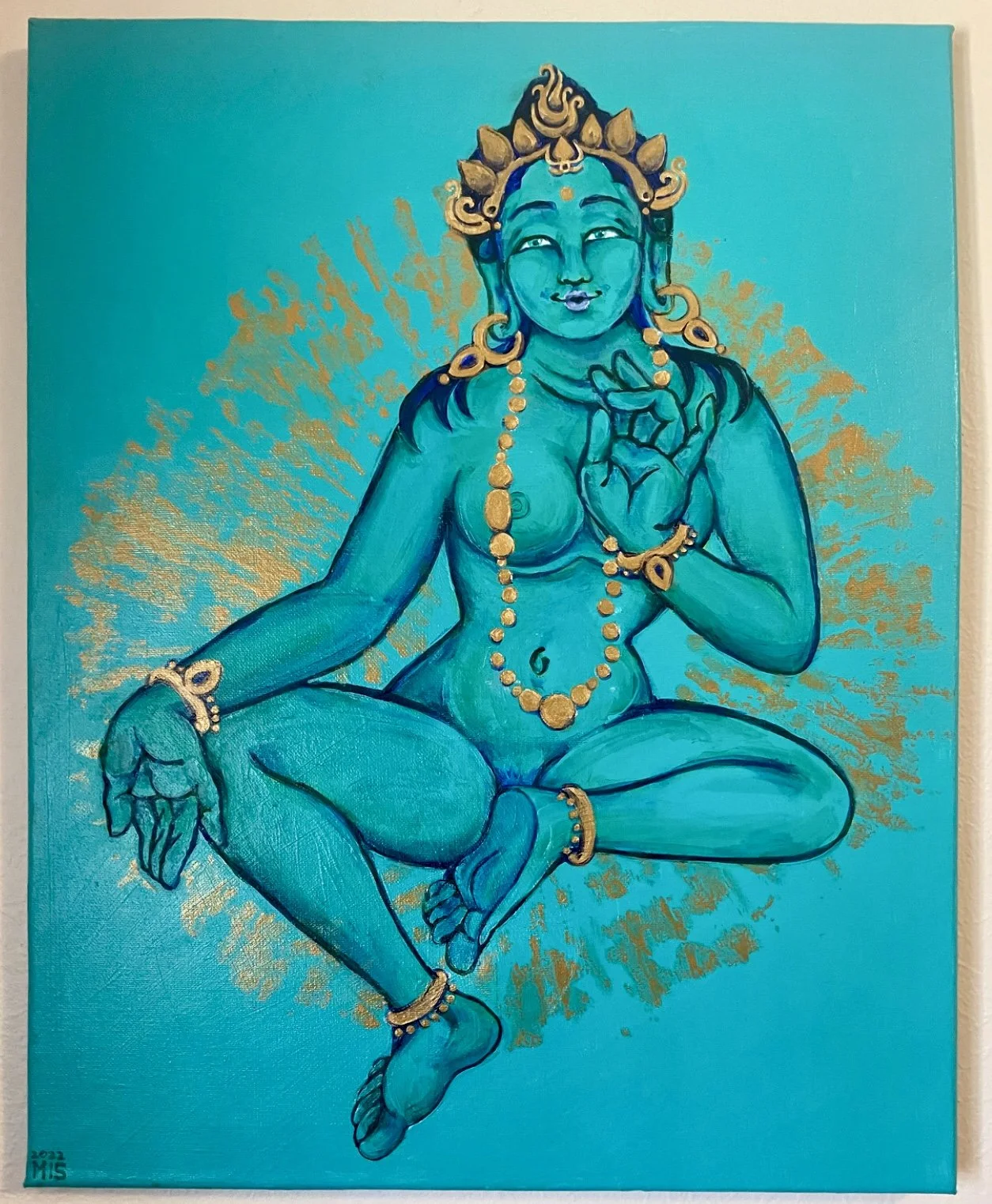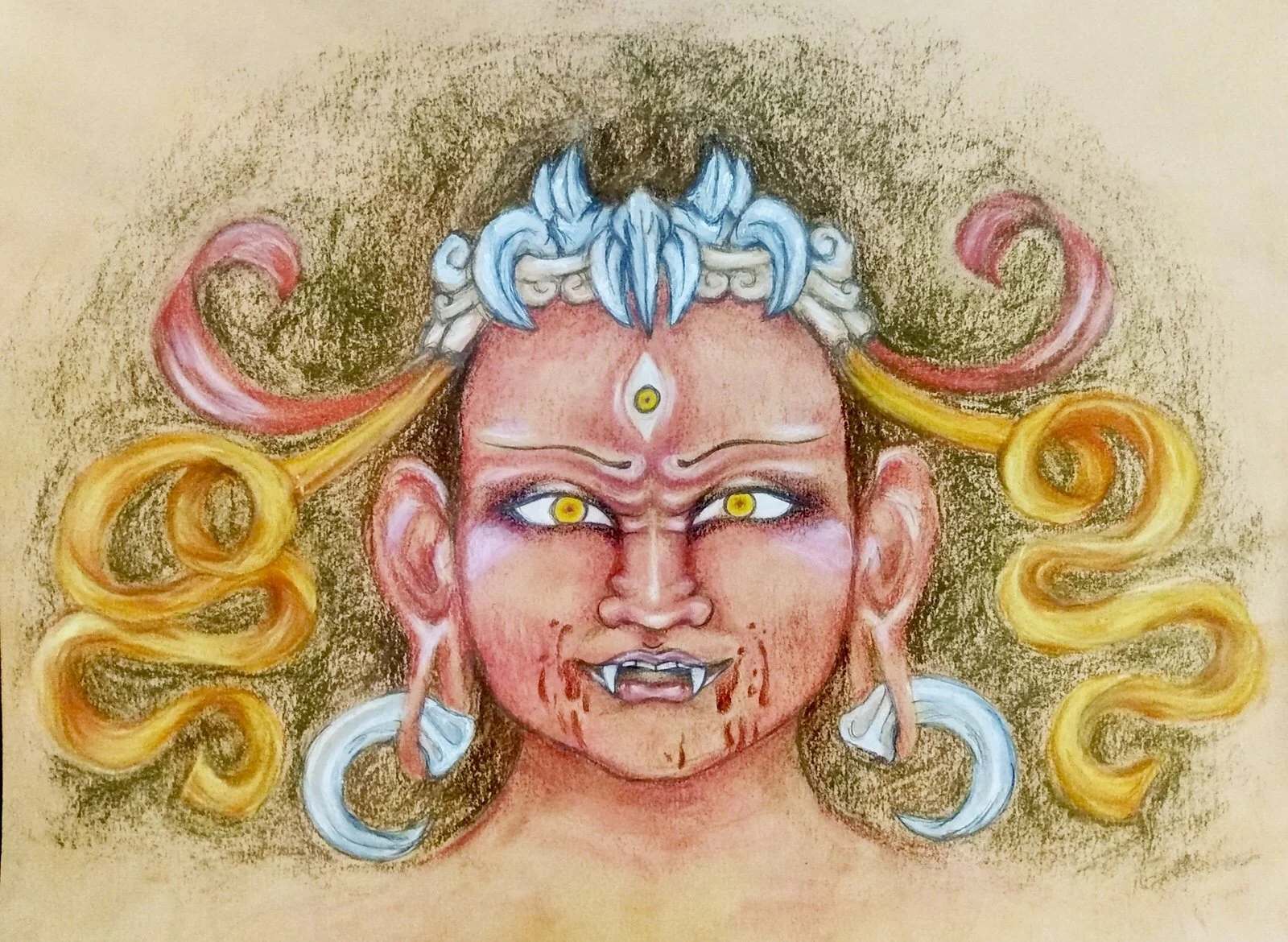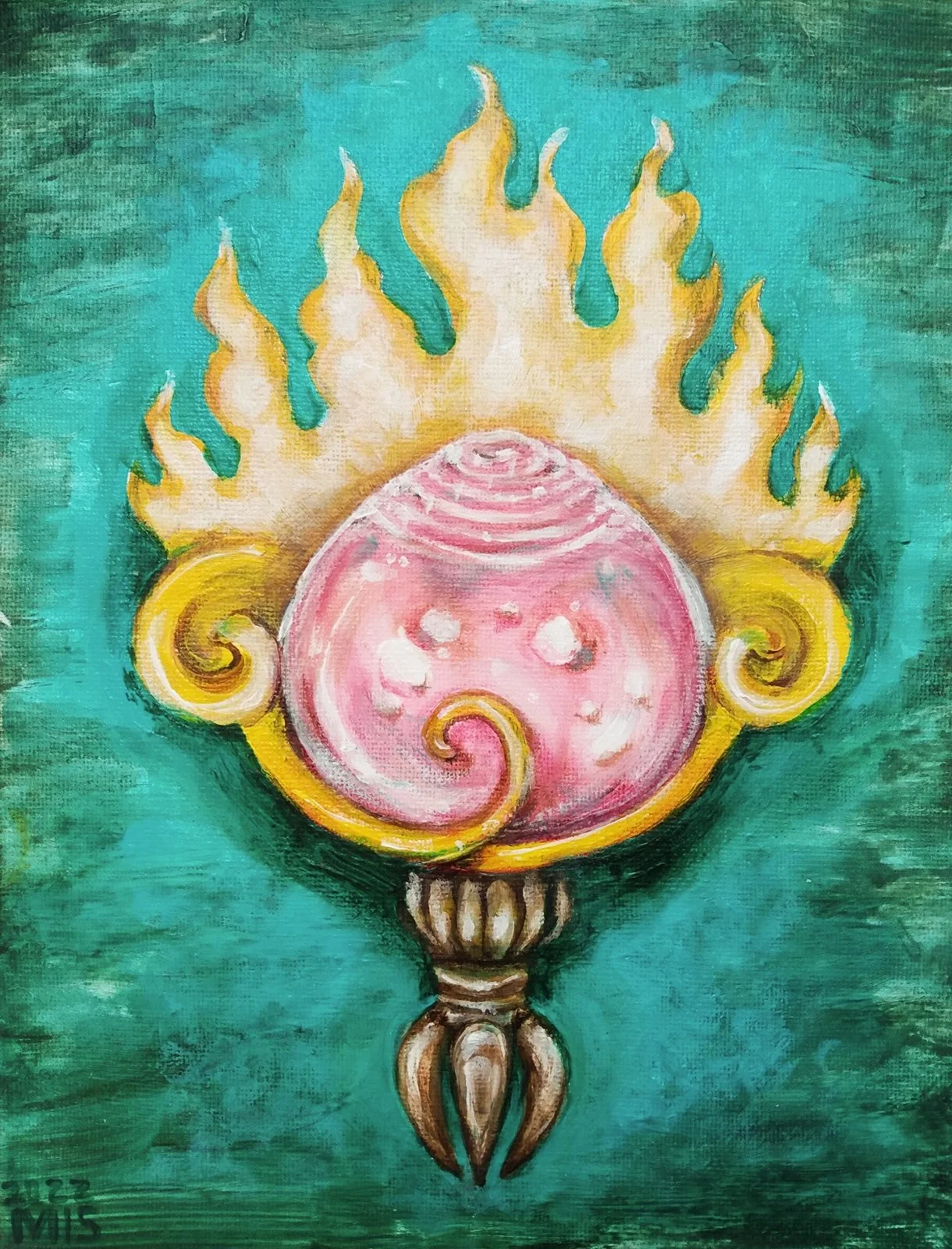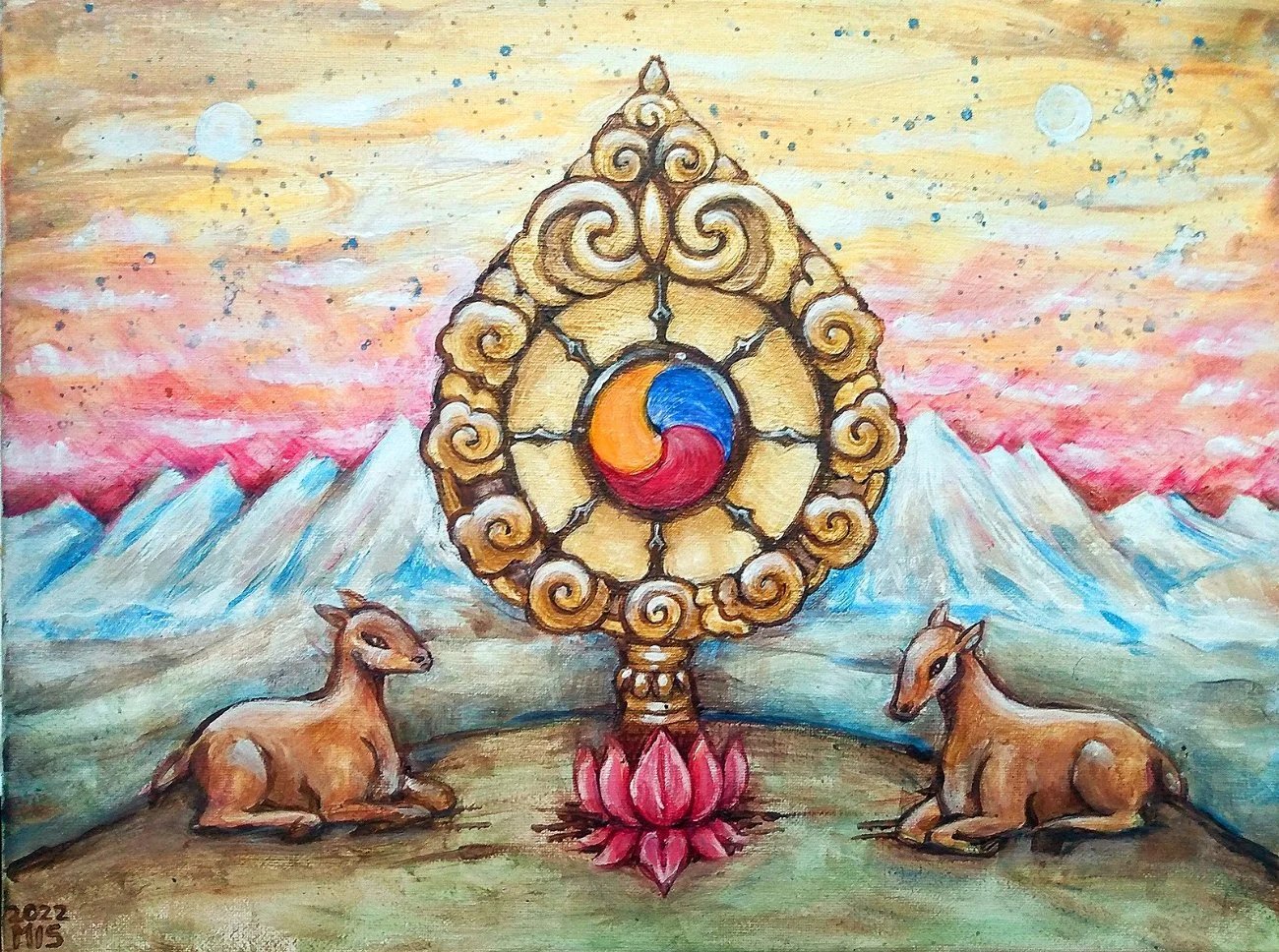BA Capstone Collection
“Tibetan Thangka Painting: Religion and Ritual in Artistic Context”
Naropa University 2022
My artworks are created in response to thangka painting symbols and traditions as I have explored them, from my personal lens as an artist in the 21st century.
On mediums: My art supplies are primarily made from plastic, a synthetic material now being found in the human bloodstream. Tibetan painters sourced their materials from what the plains and mountains provided them. The dust and minerals carried in the wind and breathed into their lungs were the same materials as their pigments and brushes. This is similar to my acrylic paints and the plastic molecules floating in my body from decades of absorbing artificial materials. We humans are made up of the world around us.
Green Tara the Swift Saviouress , acrylic on canvas
The Buddha Triumphing Over the Demon Mara , mixed media on paper
Vajravarahi Dakini , mixed media on paper
Precious Wish-Granting Jewel , acrylic on canvas
The Wheel and Deer Emblem , acrylic on canvas
Green Tara, the Swift Saviouress , acrylic on canvas. The goddess Tara is often referred to as ‘the female Buddha’ and she is worshiped in a vast variety of Buddhist lineages. Her origin stories vary in subtle ways, but all emphasize Tara’s choice as a Bodhisattva to always incarnate as a woman and help guide women out of Samsara. Green Tara is called the Swift Saviouress due to the immediacy of her power to alleviate suffering in the physical realms. Her traditional iconometry conveys this with one leg stepping out of lotus pose toward the ground.
The Buddha Triumphing Over the Demon Mara , mixed media on paper. After a long period of meditation beneath a tree, at the exact moment of the Buddha’s enlightenment, the demon Mara appeared. Mara was a tempter, a seducer, and a metaphor for the magnetic power of Samsara and sensory attachments. The Buddha was could not be tempted and was not lured from his meditation.
Vajravarahi Dakini , mixed media on paper. The Dakini are divine feminine beings exclusive to Tibetan Vajrayana. In visual art, they are depicted as nude young women with bright red flesh and fearsome, fanged smiles. The Dakini embody a ferocious quality common among Tibetan deities. While visually portrayed as roaring, enraged, or enacting physical violence, these actions all symbolize their strength in defending the Dharma.
The Precious Wish-Granting Jewel , acrylic on canvas. The Precious Jewel is an allegory for the teachings of the historical Buddha and the promise of enlightenment. Colorful, round jewels appear in most thangka paintings, often grouped in threes to represent the Three Jewels of Buddhism: the Buddha, the Dharma, and the Sangha. Rather than symbolizing material wealth, jewels in Vajrayana are metaphors for Buddhist teachings as beautiful treasures.
The Wheel and Deer Emblem , acrylic on canvas. The image of a golden dharma wheel flanked by two seated deer represents the historical Buddha’s first sermon, which took place at a Deer Park in North India. The eight-spoked wheel is a universally recognized symbol for the Buddhist Noble Eight Fold Path, the foundation of traditional Buddhist teachings. The wheel, or Dharmachakra, also has roots in Indian symbolism as representing the cyclical nature of reincarnation. The Dharmachakra grows from an open lotus flower, another icon for peace and enlightenment. The two deer on either side of the wheel are symbolic of the Buddha’s first teachings, as well as representing the calm and abiding nature of the Buddhist disposition.




